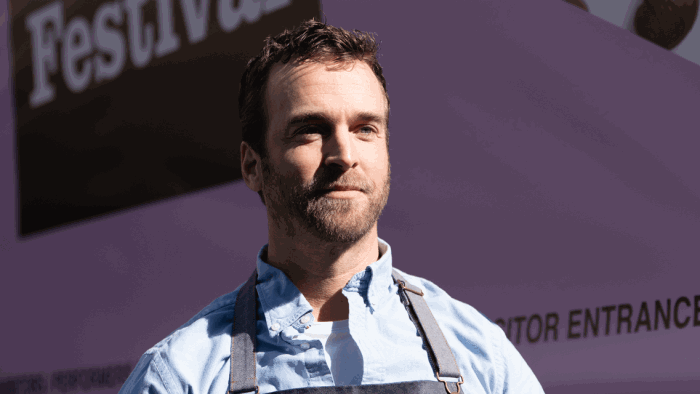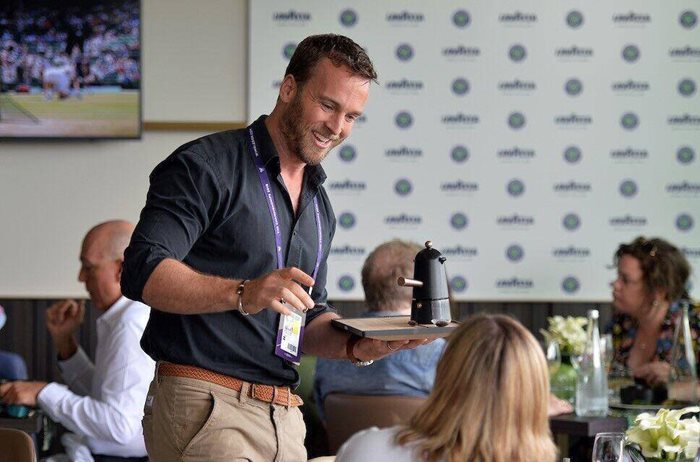Drawing insights from more than ten years developing and refining Lavazza’s barista training and specialty coffee programme, the iconic Italian roaster’s Head of Training and Brand Ambassador David Cutler shares his top tips for taking your café to the next level

David Cutler, Head of Training and Brand Ambassador, Lavazza | Photo credit: Lavazza
1. All coffee deserves respect
Working with Lavazza over the last ten years I’ve sought to elevate barista training beyond simply learning the functional elements, such as how to make espresso, steam milk or pour a cappuccino, to help brands succeed in the fast-paced world of specialty coffee.
One of the first things I did in this role was apply specialty principles to premium retail and wholesale coffee, even before Lavazza launched its 1895 single origin and microlot range. Ultimately, my philosophy is that all coffee is amazing. It’s grown by fantastic people and doesn’t have to be expensive to be appreciated. Even if you are buying cheaper coffee, that beverage should still be treated with love, care and respect – just as much as a Cup of Excellence-winning coffee should be.
I’ve introduced this philosophy to Lavazza’s out-of-home training school to make sure all our baristas can make the best beverages possible, whatever the operator context or coffee used.
Coffee is a highly sensory product and lends itself to an experiential approach. It may be a low-ticket item, but I often see operators missing a big opportunity to deliver an immersive experience in favour of higher customer turnover.
“Coffee shops need to maximise the commercial potential of every cup sold”
For operators seeking to branch out into specialty, filter coffee can be a great place to start by taking a leaf out of the specialty tea playbook. In higher-end tea venues you can order your beverage with a timer, which places the brewing process at the customer’s table. This is great for operators because you avoid queues of customers waiting, the order is off your ticket and you can move on. The customer, almost by accident, gets a wonderful experience with the anticipation of watching the timer count down and knowing their beverage will be perfect at the end.
2. Play to your business’ strengths
Coffee has a great gross profit margin but making £0.50 ($0.65) on each coffee served means cafés need to sell a lot, particularly in cities like London where property costs are sky-high.
I have the luxury of running tasting demonstrations that last up to 45 minutes, where I can guide people through the various nuances of coffee in detail. However, somewhere between the two poles of this in-depth experience and a busy café environment is the reality of a working business model.
Coffee shops need to maximise the commercial potential of every cup sold and this means being mindful of where your business is and why customers are investing in it. Don’t try to be everything to everybody, find your USP and be the best you can in your field.
If you’re an independent, play to your strengths and don’t try and compete with the big branded coffee chains – they’ve had decades to refine their fast-paced propositions. If you’re near a railway station, you’ll be serving more customers in a rush, so there won’t be time for long conversations, explanations about origin or waiting for pour overs to brew.
Do a few things really well and become known for them. Never compromise on that core offer and gradually expand if you feel the business needs to. Stay true to your proposition and even if some customers don’t like what you’re doing, there are plenty who will appreciate the authenticity of your concept.
3. Know the science of taste, smell and temperature
When cupping new coffees or crafting menus, it’s important to remember that our sense of taste is relatively narrow and essentially composed of five elements – sweet, sour, salty, bitter and savoury. Everything else is made up of what we can smell and a combination of one, two or sometimes three of those tastes.
With coffee, we taste sweetness overall first in the cup when it is hotter and acidity later as it cools. I designed Lavazza’s tasting experience with this in mind. We start with lighter floral notes and work our way through to heavier chocolate and nutty flavours. We wouldn’t be able to appreciate the floral notes if tasted later, so we start light and work towards those more indulgent flavours to avoid blowing our palate out.
Remember; taste plus smell equals full flavour, so seek to revise your menu if exploring new pairings. You can play with taste by pairing sugary desserts with coffee, which will bring out the acidic tones in a sweet filter coffee.
It’s broadly agreed that 57oC is a great all-round temperature for the optimum taste of filter coffee. Culturally, getting used to drinking coffee at lower temperatures is relatively new in places like the UK. That can be surprisingly cool for some customers, especially those used to boiling water in tea and coffee.
Temperature is particularly important when it comes to milk-based beverages. Milk shouldn’t be steamed beyond 60-65oC. Approaching 65oC and higher, milk proteins begin to caramelise and produce sulfuric acid, which leads to an unpleasant burnt, eggy smell. Cappuccino should be enjoyed straight away when the milk is at a drinkable temperature – around the high 50oC mark.
However, when it comes to espresso, baristas are often taught a shot needs to be served and consumed within 30 seconds. This approach is fine but waiting 20-30 seconds for the shot to cool allows some of the brightness to shine through espresso’s inherent intensity, particularly with specialty coffee. It’s a little like putting a drop or two of water into whisky to take the edge of the alcohol so you can appreciate the complexity of the flavours.
“Nowadays there is a far greater expectation of perfect latte art and speedy service – and as a barista you’re frequently judged on both”
4. Get your team organised for success
Unlike restaurant environments, which have set services for the day, café service is continuous and operators must be reactive to busy and quieter periods, which is not easy.
That’s why it’s important for baristas to understand the logistics of how coffee gets from the hopper to the customer. Are customers waiting next to the espresso machine or at a collection point? If they’re seated, is the barista taking the coffee to the table or is there a server?
This can get tricky when you’ve got multiple orders – you could have espresso, filter and an iced latte on a ticket – so it is essential to develop a clear workflow from a café management perspective and then optimise that process.
The best cafés are set up with the right job roles. There will be a head barista, whose job is not just to dial-in the coffee in for the day and do latte art – they are ultimately responsible for in-cup quality and customer experience. Just like a head chef in a kitchen, they might not be doing all the cooking, but they’ll be making sure that everything comes out on time and to spec. This is by far the most effective way to ensure consistency, which is ultimately what your customers want.

David Cutler at The Championships, Wimbledon | Photo credit: Lavazza
5. Quality is your café’s greatest asset
Customer expectations are higher than ever, partly thanks to the rise of good quality coffee and cafés, but also due to the explosion of ‘perfect’ social media content. That immaculate swan you’ve seen being poured on Instagram has been practised a thousand times, but you’re only seeing the one where the barista absolutely nailed it, which can lead to unrealistic expectations.
This means the level businesses want to train their staff up to is far higher than ten years ago, when if you could pour a half-decent shot or cappuccino there was no problem at all. Nowadays there is a far greater expectation of perfect latte art and speedy service – and as a barista you’re frequently judged on both.
It took me years to perfect latte art – it’s a repetitive skill and there is a knack to it that some get straight away while others take longer to master.
For operators, there should be a subtle appreciation that customers will judge a coffee visually first and taste second – but both should be on point most of the time. Even if a shot is slightly miss-pulled or something wasn’t quite right because staff are busy, if it looks on point, you’ll be forgiven nine times out of ten. That being said, this is not an excuse for bad-quality espresso!
In busy environments, it’s also a common mistake for baristas to rush. Sometimes it’s their own decision, but pressure often comes from management or supervisors. If baristas are told to speed up, the reality is that they are skipping important steps or shortcutting to shave off seconds and the quantity of quality beverages served nose-dives. Good quality is your long-term winner. Even if you’ve got a customer waiting a little too long, who is impatient or even complains, if the beverage served is late but high-quality, your business will be in good long-term health.
This article was first published in Issue 16 of 5THWAVE magazine.
Subscribe to 5THWAVE to receive each edition in print and digitally or sign up to our newsletter and be the first to read the latest articles and updates on World Coffee Portal research.
